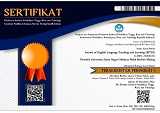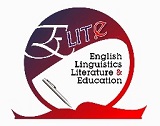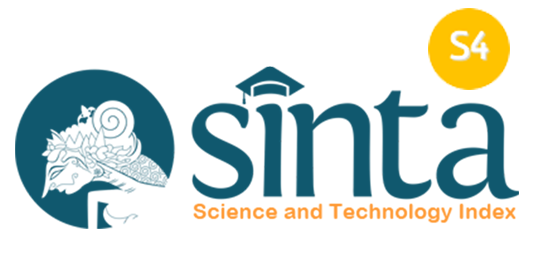The influences of cultural characteristics in writing English: Perspectives from multilingual learners
Abstract
Keywords
Full Text:
PDFReferences
Abduh, A., & Rosmaladewi, R. (2018). Promoting intercultural competence in bilingual programs in indonesia. SAGE Open, 8(3). https://doi.org/https://doi.org/10.1177/2158244018788616
Anggarini, I. F. (2021). Insertion of the values of religious moderation on Indonesian EFL class. Journal of English Language Teaching and Learning (JETLE), 4(1), 1–10. https://doi.org/https://doi.org/10.18860/jetle.v4i1.17744
Belcher, D. (2014). What we need and don’t need intercultural rhetoric for: A retrospective and prospective look at an evolving research area. Journal of Second Language Writing, 25, 59–67. https://doi.org/https://doi.org/10.1016/j.jslw.2014.06.003
Casanave, C. P. (2015). Case studies. In B. Paltridge & A. Phakiti (Eds.), Research methods in applied linguistics. Bloomsburry.
Casanave, C. P. (2017). Controversies in second language writing : dilemmas and decisions in research and instruction. University of Michigan Press.
Coady, M., & Escamilla, K. (2005). Audible voices, visible tongues: exploring social realities IN spanish-speaking students’ writing. Language Arts, 82(6), 462–471.
Connor, U. (2011). Intercultural rhetoric in the writing classroom. University of Michigan Press.
Crozet, C., & Liddicoat, A. (1999). The challenge of intercultural language teaching: engaging with culture in the classroom. (Liddicoat,). Language Australia.
Duff, P. A., & Anderson, T. (2015). The Cambridge Guide to Language Research (Case study). Cambridge University Press.
Forbes, K. (2020). Cross-Linguistic Transfer of Writing Strategies: Interactions between Foreign Language and First Language Classrooms. Channel View Publications.
Hamilton, L., & Corbett-Whittier, C. (2013). Using case study in education research. ((M. Lagran). SAGE.
Han, J., & Hiver, P. (2018). Genre-based L2 writing instruction and writing-specific psychological factors: The dynamics of change. Journal of Second Language Writing, 40, 44–59. https://doi.org/https://doi.org/10.1016/j.jslw.2018.03.001
Holliday, A. (1999). Small cultures. Applied Linguistics, 20(2), 237–264. https://doi.org/https://doi.org/10.1093/applin/20.2.237
Indah, R. N. (2017). Critical thinking, writing performance and topic familiarity of indonesian efl learners. Journal of Language Teaching and Research, 8(2), 229. https://doi.org/https://doi.org/10.17507/jltr.0802.04
Jimenez, R. T. (2001). It’s a difference that changes us: An alternative view of the language and literacy learning needs of Latina/or students. The Reading Teachers, 54(8), 736–742.
Johnstone, P. (2011). English and the Survival of Multiculturalism: Teaching ‘Writing from Different Cultures and Traditions.’ Changing English, 18(2), 125–133. https://doi.org/https://doi.org/10.1080/1358684X.2011.575244
Kaplan, R. B. (1966). Cultural thought patterns in intercultural education. Language Learning, 16(1–20).
Liddicoat, A. (2019). Critical perspectives in intercultural language learning. Elia, 19, 17–38. https://doi.org/https://doi.org/10.12795/elia.mon.2019.i1.02
Liddicoat, A. J. (2022). Teacher education for diversity: afterword. Language and Education, 36(2), 188–194. https://doi.org/https://doi.org/10.1080/09500782.2021.1981929
Miles, M. B., Huberman, A. M., & Saldaña, J. (2014). A methods sourcebook. In Qualitative data analysis: (3rd ed.). California: Sage.
Mott-Smith, J. A. (2013). Viewing student behavior through the lenses of culture and globalization: two narratives from a US college writing class. Teaching in Higher Education, 18(3), 249–259. https://doi.org/https://doi.org/10.1080/13562517.2012.725222
Naibaho, L. (2022). The integration of mind mapping strategy on students’ essay writing at universities kristen Indonesia. JPPI (Jurnal Penelitian Pendidikan Indonesia), 8(2), 320. https://doi.org/https://doi.org/10.29210/020221678
Ng, E. (2020). Formulation processes of monolingual, bilingual, and biliterate writers: Effects of biliteracy. Australian Journal of Applied Linguistics, 3(3), 213–232. https://doi.org/https://doi.org/10.29140/ajal.v3n3.353
Ortega, L., & Carson, J. (2010). Multicompetence, social context, and L2 writing research praxis. In Practicing theory in second language writing (In T. Silv, pp. 48–71). Parlor Press.
Paltridge, B., Harbon, L., Hirsh, D., Stevenson, M., Phakiti, A., & Woodrow, L. (2009). Teaching academic writing: an introduction for teachers of second language writers. University of Michigan Press.
Rohmana, W. I. M., & Jianggimahastu, P. (2019). Error Analysis of Students’ Recount Text Writing – Junior High School Student. Journal of English Language Teaching and Learning (JETLE), 1(1), 10. https://doi.org/10.18860/jetle.v1i1.7757
Tsui, A. B. M., & Ng, M. M. Y. (2010). Cultural contexts and situated possibilities in the teaching of second language writing. Journal of Teacher Education, 61(4), 364–375. https://doi.org/https://doi.org/10.1177/0022487110364855
van der Veen, I., & Meijnen, G. W. (2001). The individual characteristics, ethnic identity, and cultural orientation of successful secondary school students of turkish and moroccan background in the netherlands. Journal of Youth and Adolescence, 30(5), 539–560. https://doi.org/https://doi.org/10.1023/A:1010496520767
Zhang, Z. (Victor). (2020). Engaging with automated writing evaluation (AWE) feedback on L2 writing: Student perceptions and revisions. Assessing Writing, 43(100439). https://doi.org/https://doi.org/10.1016/j.asw.2019.100439
DOI: https://doi.org/10.18860/jetle.v4i2.20679
Refbacks
- There are currently no refbacks.
Jalan Gajayana 50 Malang 65144, Jawa Timur, Indonesia

This work is licensed under a Creative Commons Attribution-ShareAlike 4.0 International License.
Indexed by





